I'm a terribe novice when it comes to electronics and I've got a question: I have a simple circuit including a photocell that regulates current (I hope this terminology is correct). It works as it should: The more light, the more current flows.
Now I am looking for some opposite device: A schematic / device / photocell (?) that increases its resistance the more light is applied.
Is there something like that? I'd be gracious for any help.
edit details:
I'm quite sure that what I'm doing is a total no-go, but somehow it's working anyhow (i'd be glad for any tip you guys have :)).. My super-simple (dangerous?) circuit consists of a 9V battery and a power-led. in between their connection I simply placed a photocell. As mentioned, I'd like this photocell to work in opposite of its current function: Power-led should become brighter if I "close up" the photocell.
thanks a ton so far!



